Roy Turner Interview
Elvis in Tupelo
|
Roy Turner is a Tupelo/Elvis Historian who is well-known in the Elvis world for his amazing research into this all-important period of Elvis' past. He was the major source of research behind Elaine Dundy's book 'Elvis and Gladys', has published several historical books about Lee County, has been involved in multiple Elvis projects and was the author of the recent MRS book 'Tupelo's Own; Elvis Presley'.
Along with his friend Jim Palmer, Roy produced a documentary about Elvis' 1956 triumphant return, 'Homecoming: Tupelo Welcomes Elvis' which was premiered at the 2006 Tupelo Elvis Festival.
|
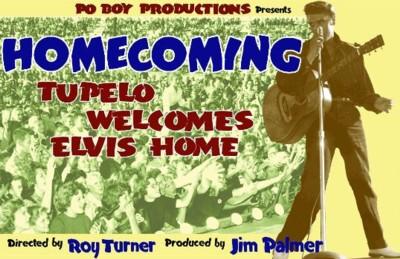 |
Roy Turner is a Tupelo / Elvis Historian who is well-known in the Elvis world for his amazing research into this all-important period of Elvis' past. He was the major source of research behind Elaine Dundy's book 'Elvis and Gladys', has published several historical books about Lee County, has been involved in multiple Elvis projects and was the author of the recent MRS book 'Tupelo's Own; Elvis Presley'.
Along with his friend Jim Palmer, Roy produced a documentary about Elvis' 1956 triumphant Tupelo return 'Homecoming: Tupelo Welcomes Elvis' which was premiered at the 2006 Tupelo Elvis Festival. That film then inspired documentary maker Michael Rose to produce a more in-depth film based on the original. The recently updated edit of Roy Turner's documentary was premiered at Tupelo's 2008 Film Festival and it will be shown in the future on the Biography channel.
EIN's Piers Beagley was lucky enough to meet up with Roy last year in Tupelo - and the time is right to find out exactly what he is up to in 2008.
EIN - Roy it is a pleasure to talk once again. Firstly can you tell us how you first became involved as a Tupelo historian - and whether the Elvis connection was an all-important factor?
Roy Turner: After seeing the TV series Roots in 1977, I decided to research my own family. Suddenly history was interesting. It was my people who were affected by war, famine, blight and so on. I realized that I was who I was and lived where I did simply because of the fortunes and mis-fortunes of my ancestors. I began publishing genealogical records of Lee and Itawamba Counties in Mississippi. These were the counties my family settled in when they came to Mississippi. Genealogy and history go hand in hand. One compliments the other. Although I grew up in East Tupelo, went to Lawhon School, and had some of the same teachers as Elvis, I really was not a fan. I saw all of his movies, but then I saw all movies at the local Lyric because my great aunt Ica worked there and one of her perks was free tickets. I was born too late to be present for his groundbreaking 1950's era.
EIN - When did you first get interested in Elvis?
Roy: When Elaine Dundy came to Tupelo in 1981 to research Elvis & Gladys, she asked the local library if they could suggest a local genealogist/historian to assist her in the research. We were introduced and were off to the races. Elaine was very interested in everything Elvis. The more we researched, the more I liked the guy and the more I discovered how similar our childhoods were.
|
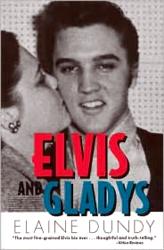 |
EIN - Sometimes 'locals' are not so interested in hometown characters. Do you think this is true of Tupelo and Elvis - and have you seen it change over the years?
Roy: Tupelo was not proud of Elvis until after his death. I think many of the old timers just could not grasp what they considered to be "poor white trash" making something out of themselves - especially something as big as Elvis became. After his death, fans started sending money into the city to do something in memory of Elvis. This money was used to build the Chapel at the birthplace, but more importantly, it awakened something in the city fathers - Elvis was a tourist draw. Now what started as a mere method to make money has become something more and better. As with anyone touched by Elvis, even Tupelo and its residents came to appreciate him and be proud of him. At least most of the old timers did.
EIN - With Elvis' Birthplace being officially opened in 1971, did you see the Elvis interest in Tupelo grow at this point?
Roy: The birthplace was falling down and in need of much repair work. The East Tupelo Garden Club (which consisted of matronly women and retired school teachers) ask the city if they could take on the house as a club project. The city agreed and these dear little old ladies saved the house from being forever beyond repair.
EIN - I know you were majorly involved in the recent 2006 upgrade of the Elvis Tupelo Museum. Were you involved in the Museum previously - and how did your input change the new layout?
Roy: I was not previously involved. I guess I had to prove myself. With Jim Palmer's and my film and the recreation of the 56 concert, I think the leaders of the birthplace saw I knew my subject well, had an honest appreciation for the man and his talent and wanted to preserve his story "warts and all" as I say. To take the warts away is to take away the essence of Elvis. Elvis became this great music icon in spite of the warts in his life. For me, his story of triumph in spite of the pitfalls make him all the more inspirational.
EIN - It must have been disheartening for you when Janelle McComb passed way last year. How close was your relationship with her - have you always known her?
Roy: I have known Janelle since the mid 70's. We were acquainted but did not have a lot of contact with one another. Janelle, in her own way, did her best to preserve Elvis' story. I admire her for that simply because she did during a time that it was not a popular item on the agenda. Her tenacity certainly preserved many things for future generations.
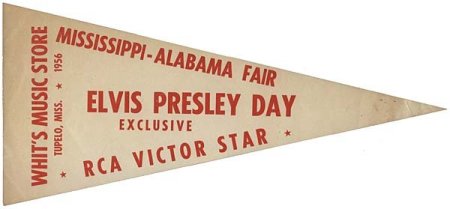
EIN - Who do you think are the most important Elvis Tupeloans who you have met over the years? I know you were close to Elvis' aunt Lillian..
Roy: Lillian was definitely one of my favorites. She told Elaine and me things about the family we could have never learned without her help. She and Gladys had worked with my father in the shirt factory and I think that relationship is one reason she was so willing to share stories with us.
EIN - What about people like Brother Frank Smith, he must have told you some fascinating stories?
Roy: Brother Frank is perhaps the single most important Tupelo influence on Elvis. At a very early age he was encouraging his singing and guitar playing. It was Bro. Frank who taught Elvis, and all the other kids of the Assembly of God Church in E. Tupelo, Old Shep. But Elvis embraced the song and made it his.
(Right: Roy Turner and Brother Frank in 2007)
(Photo by Tony Stuchbury. Go here for more great EP images)
|
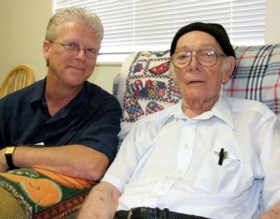 |
EIN - It must have been unbelievable for Brother Frank to see the Elvis phenomenon happen! What on earth did he thing about Elvis being described by the media as the Devil incarnate?
Roy: Brother Frank never thought of Elvis as evil. He knew too well how they all cut up in church service when the spirit came upon them. When Elaine and I went to a little church in the Juda Community in Pontotoc County, MS, it was at the suggestion of Bro. Frank's wife Corrine. Corrine said if we wanted to see religion the way Elvis experienced it, we would have to go to the county - the city churches had become to sophisticated. After about three hours of the service in hot, Mississippi, humid, July weather in a little church with ceiling fans whirling and windows opened, we left. The service continued until way into the night. The people had danced around the entire sanctuary, shouting, writhing, fainting, wailing to exhaustion. Elaine remarked: I feel like I have been to an Elvis concert.
Brother Frank's only comment of remorse was that he had a thought to go talk to Elvis about his spirituality about a month before his death. Bro. Frank regretted not following up on what he considered a message from God that Elvis needed to talk.
EIN - Charlie Boren was the first announcer on Tupelo's first radio station WELO. What's the connection between him and Elvis singing 'Old Shep'?
Roy: Elvis hung around the door at WELO so much that they all knew him by name. Charlie encouraged Elvis to sing other songs - even forbade him from singing Old Shep at the 1945 fair contest. Of course we all know Elvis replied "yes sir" and went on about his business as usual and sang the song at the fair. Charlie and Elvis were both good sports. Years later, Elvis remembered the incident and called Charlie to rub it in that he had made a record of Old Shep and sold a million copies. I love Elvis' humor and good natured getting even with the boys back home.
EIN - In all how many "Elvis Tupeloans" or Elvis' friends from school have you managed to track down or interview over the years? What about the Tupelo Elvis Sweethearts?
Roy: Goodness. I can't name them all! When Elaine and I were doing E & G, I contacted most of the kids that would have been in his graduating class had he remained in Tupelo, but that was 27 years ago. Some of the more memorable ones were Gladys' cousin Corrinne Tate, who she and Elvis lived with in South Tupelo while Vernon was in Parchman. Ernest Bowen of WELO and Jean Boren (Charlie's widow) have great stories. Terry Wood, Sam Bell (his best friend on N. Green St.) Bo McClinto - who took him to Shake Rag. Bro Frank was always humble and willing to share with me and all the fans. The Tupelo Elvis Sweethearts were a wonderful microcosm of 1956 teenagers looney over Elvis. Sara Patterson had one of the best stories of her meeting him at the 56 fair.
EIN - You are credited in Peter Guralnick's marvellous 'Last Train To Memphis' biography. Do you think Guralnick correctly captured the life of Elvis In Tupelo?
Roy: I do. Peter, as he states in the acknowledgments, built on Elaine's research. He has some different interpretations, but either could be right on in those areas where we can only examine the facts that can be found and make intelligent conclusions.
EIN - Many fans ask what happened to the 'Elvis Presley Youth Recreation Centre' which the proceeds of his 1957 Tupelo show were supposed to go to. There was a park created around 1960 I believe, but did the possible $20,000 (a lot of money in its time) that came out of the benefit ever get accounted for?
Roy: As a child in East Tupelo - and hearing my parents and other adults talk about the subject, we all felt the city had taken the money and used it on the park on the west side of town. I do not know if that is the case or not. But I do know, Elvis placed a call to Mayor Ballard at one point and said, "if dirt isn't moving by the end of the month, somebody is going to pay." When I interviewed Ike Savery's son Bitsey, I found it interesting that he stated, "You know they built that park in a day. People came from Amory and all around donating trucks to haul dirt. It was a community effort." For whatever reason, the time Elvis donated the funds in both 56 and 57 and the time things finally started happening were way too long. I am glad it did happen as I had my first dance in the youth center. She was about a foot shorter than I and I think I stepped all over her feet. (Laughs)
EIN - The black suburb of Shake Rag always gets named as a place that Elvis would have hung out and been influenced. However as Elvis was only 13 when he left Tupelo it seems a young age to be hanging around a poor area of town. What is your opinion?
Roy: I know he did go to Shake Rag with Bo McClinton. And while there he met Muddy Waters and many other blues performers. The people in Shake Rag were no poorer than the Presley family - they were just a different color. The sounds drew Elvis like a magnet and the interesting part is he was always welcome. It was also an area of a lot of sinful things like gambling and prostitution and booze. Elvis wasn't the only white boy or man for that matter going into Shake Rag. He was just the only one interested in the music.
EIN - Did 'Shake Rag' exist in the same way when you were growing up or had it changed? Did you visit it? Is the area still discernible?
Roy: It did exist but I was never brave enough to venture into the community like Elvis did. It was torn down during the early 70's and our colosseum sits on part of the site now. I think it remained a pretty hopping place until its end.
EIN - Even when Elvis lived in Memphis, he was known for showing friends around his Tupelo roots. Do you know if Elvis did return there in his later years to look around - and did you ever see Elvis in Tupelo?
Roy: I came close once and I think I saw him once. When I was in third grade (ca 1962), a murmur came down the hall, then someone stuck their head in the door and said Elvis is here. Our teacher told us to remain seated and quite and she would be right back. We got all excited that Elvis would sing in the auditorium where he sang as a child. But it did not happen. It was spring and the windows were open. Elvis walked up to the window at Mrs. Grimes’ 5th grade class and stuck his head in and said, "Hey Teach." They talked at the window – then he was gone – and so was my chance to see him.
We boys played at Tulip Creek as kids. Fishing, swimming, etc. At the time it was a gravel road and a wooden bridge. We were leaving the creek one day when a black Lincoln with dark window came down and stopped at the bridge. One of us said "that looks like Elvis in the back seat" and we went on our way. Later while researching E & G, James Ausburn told me how he and Elvis played at the same creek as kids. Then I read where Elvis liked to bring his new friends to Tupelo to show them where he was born and played and went to school, etc. I think it was Elvis that day. Missed him again.
I did see him in 1974 at the Mid-South Coliseum in Memphis. Front row – center stage seats. He was awesome
EIN - Can you describe what it was like being so close at the Mid-South Colosseum concert? Do you listen to the FTD release and relive it all? Do you even think that recordings of Elvis can do justice to his astounding presence? Did you not get the chance to see his later concerts in Memphis, or did everyone think that he would always be coming back again?
Roy: We certainly thought Elvis was going to be here for a while, so there was no rush. As I said, we had front row, center stage seats (my cousin worked the box office and there were a lot of cousins on the front row). He was remarkable. His stage presence was overpowering. I think even if you did not like the man or his music, you would leave a live performance as a believer and fan. I made the comment that it was a little embarrassing that he stared directly as me during the whole concert. There were not that many men on the front row. All of my cousins began, "Oh no. He was starring at me." And over the years I have heard many people sitting all over the auditorium say it seemed he was looking right at them while he sang. It must have been a gift for all of us to feel he was looking at only you.
EIN - Elaine Dundy's fantastically detailed 'Elvis And Gladys' owed an enormous amount to your research. Was it fun working with Elaine on that book?
Roy: It was the greatest summer of my life to that date. I always had stars in my eyes and loved old Hollywood and the studio system – the whole pie. Elaine was very glamorous. She knew everybody I had admired as a kid: Vivian Leigh, Olivier, Orson Wells, and had met and threw a party for my childhood passion, Marilyn Monroe. I learned so much from her – how to research a biography. How to interview. And most of all I made a friend. That friendship lasted for 27 years. Until her recent death.
When she left I told her I was sad because I knew I would never see her again. And she responded "oh yes you will. We will work together again." And of course we did. I miss her greatly. We talked weekly and sometimes three times a week or three times a day. I owe her so much.
(Right:Roy & Debbie Turner with Elaine Dundy in 2008) |
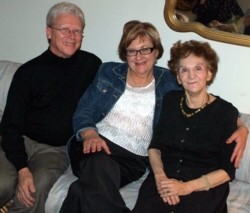
|
EIN - I think 'Elvis And Gladys' was the first book that really opened fans eyes not only to the poverty of where Elvis' family came from but also the importance of Tupelo in his life. How do you think Elvis' life would have differed had he be born and grew up In Memphis instead? Would the Elvis Presley phenomenon still have happened in the same way?
Roy: Good question. I just don’t know. He certainly would have been a different person. Poverty in E. Tupelo was not like poverty in a large city. The community supported one another. If one person had a Kodak camera, they all had access to a Kodak camera. A radio, sewing machine and so on. The constant encouragement Elvis received in East Tupelo was important to him.
I am not so sure he would have received the same in Memphis, because when he got to Tupelo proper, the kids at Milam treated him differently from the kids at Lawhon. No doubt he would have become a sensational performer, but the sweet, humble, honest Elvis we all knew and loved would have been a different man had he had a different upbringing in different surroundings.
EIN - As most Elvis fans would know Elaine Dundy recently died aged 81. Reading her biography she had the most amazing life. I know that you and her remained good friends. Is there any story you'd like to tell us about Elaine?
Roy: She was a very giving person. Giving of herself. I think that was an unusual trait for someone of her statue. One of her caregivers was Asian and studying to become a nurse. She spoke very fragmented English. Elaine took it upon herself to teach her English and enrich her vocabulary. This was the hired help. That was Elaine. She once told me she had no class – she assumed the class of the person she was with. And that trait always made others feel comfortable.
EIN - The MRS book 'Tupelo's Own; Elvis Presley' is your most recent publication. How long did you work on that and did you make any more important discoveries while researching it?
Roy: I spent about 6 months writing and re-writing as Joseph made suggestions. It was the culmination of the things I had learned with Elaine plus the things Jim Palmer and I discovered while shooting Homecoming. The most important discovery was the interview with Sam Bell and Bo McClinton. Elvis’ two black childhood friends. Bo took Elvis into Shake Rag to hear the blues and meet Muddy Waters. We never knew he actually ventured into Shake Rag much less became a regular visitor. |
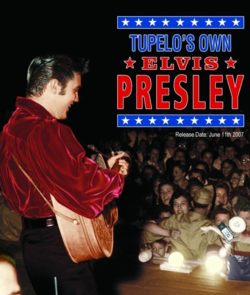 |
EIN - I believe that you were the one who tracked down the original print of the 1945 Talent Show - where Elvis came fifth. That's an amazing find after all these years!
Roy: Yes. I was so excited. I had heard for years that Charlie Boren’s widow, Jean had the photo. When she pulled it out my eyes popped out of the sockets. After the interview, I said, "I know the answer to this question, but I am going to ask anyway. Is there any way you would let me take this photo and scan it into my computer?" She looked at me rather matter of factly and said, "I have never let that picture out of my site. (pause). . But, I am going to let you take it because you look honest." Wow! And I did and returned it two days later.
EIN - Were you involved in tracking down a lot of the previously unreleased photos in the book, some of which were sensational?
Roy: You know Elaine coined the phrase GODSHOT. She said she would be at the right place at the right time and something would just fall into her lap. The Elvis Homecoming story was my Godshot. Jim and I started because I had talked about doing it for a decade. Jim said quit talking and do it. Little did we know the 50th anniversary was just around the bend.
I had acquired the good faith of several people who had Elvis stories over the years and photos. They were more than happy to let me use them. Godshots! What else can I say.
(Right: Elvis at the 1956 Fair with Patricia Gartin)
|
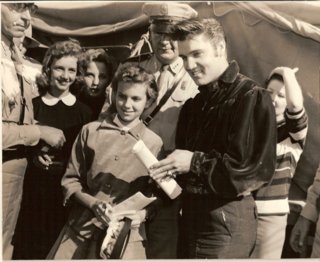 |
EIN - Several fans have asked me if it was actually you who tracked down the amazing unreleased Fox News movie footage of Elvis live on stage that day?
Roy: I had inquired of Peter Bregman at Fox Movietown Division about the outtakes. He sent me a screener of all the shots made that day. Then Joseph followed up on it.
EIN - What about the snippet of the Evening Show footage, do you think there could be any more surprises that could be discovered?
Roy: There have to be photos and footage in local people’s attics. Also when you look at the crowd shots, there are a lot of camera out there and some are movie cameras. Yes I think more will be discovered in time.
EIN - What did you think of the final MRS Tupelo package, including the DVD?
Roy: I thought is was an awesome job. Beautifully packaged. First Class as all of Joseph’s work is. I was totally pleased to be a part of it. |
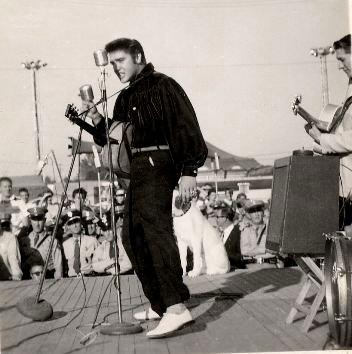 |
EIN - I'm not sure if you know of the debate surrounding the fact that MRS's Jo Pirzada used some unacknowledged photos in the 'Tupelo's Own' book, some of which had definitely been scanned from Ernst Jorgensen's 'Flashback' book. Do you know anything about this debate?
Roy: I only know about what I contributed. I know he had several sources. I was only one of them.
EIN - When it comes down to it 'Tupelo's Own; Elvis Presley' book was so popular with fans that I believe it has sold out. Do you know if this is true?
Roy: It did sell out. Joseph gave me permission to have the book reprinted in America. But I have not been able to accomplish it to date. Hopefully someday.
EIN - Can you tell us about your documentary 'Homecoming: Tupelo Welcomes Elvis', how long did you work on it before its 2006 debut?
Roy: Jim and I began actual filming in August 2004. The first interviews we shot were Jack Cristil and Bro. Frank Smith. Then my mother passed away unexpectedly and I did not resume work on it until Jan of 2005. Jim was editing and adding music two days before the premiere.
EIN - As a documentary how does it compare to the MRS Tupelo book and DVD?
Roy: The Tupelo’s Own book is a compliment to the film. There is more detail in the film about the two fair appearances – 1945 and 1956 – and the chance to hear the people speak in their own voice. So many of them were unique, like Jean Boren and Judy Hopper.
EIN - What was it like being there at the 2006 Tupelo Festival seeing shown for the first time?
Roy: Jim and I were on cloud nine. To see your own creation on a big screen and people applauding your work is an awesome experience I will never forget. You think you have created something good, something the fans will like and appreciate, but you never know. Hearing their applause was reassurance we had done a good job and had done Elvis justice.
EIN - And how does the original version differ from this newly edited 2008 version?
Roy: They are really two different stories. Ours focused on two days in the life of Elvis and how they were intertwined. Michael Rose’s film delves into Elvis’ childhood, giving the audience the chance to experience Elvis growing up in Tupelo and ends with his homecoming concert. The fulfilment of a dream.
EIN - It's great that the new Return To Tupelo documentary will get out to such a wide audience. It's such an historical moment that the 'general public' often don't know much about. Are there any particular interviews in this new 2008 documentary that didn't feature in your original film?
Roy: Yes there are several. The most interesting to me is to be able to hear the voices of Mr. Bobo at Tupelo Hardware recall the day Elvis and Gladys walked into the store for a rifle and walked away with the guitar that changed musical history. If Elvis had gotten the gun that day...
Another is Elvis' 6th grade teacher, Mrs. Dewey Camp. Mrs. Camp recalls Elvis sitting in the class at the back of the room, rather timid, until the day she asked, "can any of you children sing?" His little hand flew up into the air...
For us fans to hear the stories in their own words and voice is great. Jim and I had the interviews for our film, but could not work them into our format. Michael has done a great job with them. They were interviewed not long after Elvis' death by Gwen Posey. Thank God for her foresight.
Also, Mary Magdaline Morgan - Elvis' first girlfriend at Lawhon - is interviewed. ... And Elaine Dundy gave her last on camera interview for the film.
I hope everyone will be as pleased with the end result as I am.
EIN - How did the premiere go last week at the 2008 Tupelo Film Festival? Were any of Elvis' original friends able to be there and what did they think?
Roy: Michael’s film premiered at the festival last week. It was a small crowd – maybe 100 – the people attending were pleased with the end result. Two old Tupelo friends were present – Guy Harris and Elvis’ old sweetheart, Mary Magdaline Morgan. It meant a lot that they were pleased with the film.
EIN - Do you know when it will be shown on TV?
Roy: I am told this year, but no date. I am betting on August.
EIN - This year's Elvis Tupelo Festival is about to start. Are you involved in it this year? And what excitements can fans expect?
Roy: I am helping to oversee the tribute artist competition at the Lyric Theatre. We will also be showing scenes from our original film during the competition on Friday.
EIN: Anything you want to add?
Roy: I am thankful that Elvis was born in Tupelo and that Elaine Dundy came to town to learn all about him. And that I was picked up for that journey. Elvis has added so many good things to my life. Another Godshot! |
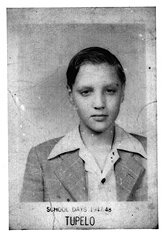 |
EIN - I can't wait to see the finished documentary on TV, that will be a real buzz. Thanks so much for your time, I know that you are a busy, busy man!
Roy: Thanks Piers. I hope it goes well.
Interview by Piers Beagley in May 2008
-Copyright EIN 2008
Click here to comment on this article
EIN Website content © Copyright the Elvis Information Network.
Elvis Presley, Elvis and Graceland are trademarks of Elvis Presley Enterprises.
The Elvis Information Network has been running since 1986 and is an EPE officially recognised Elvis fan club.
|
|
